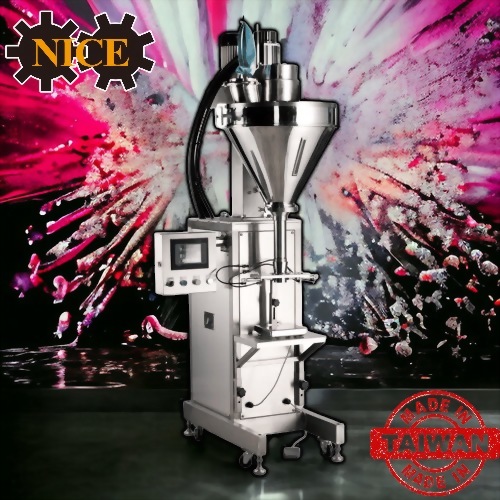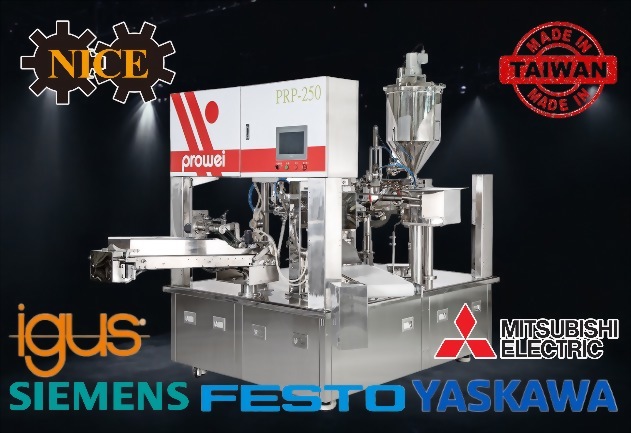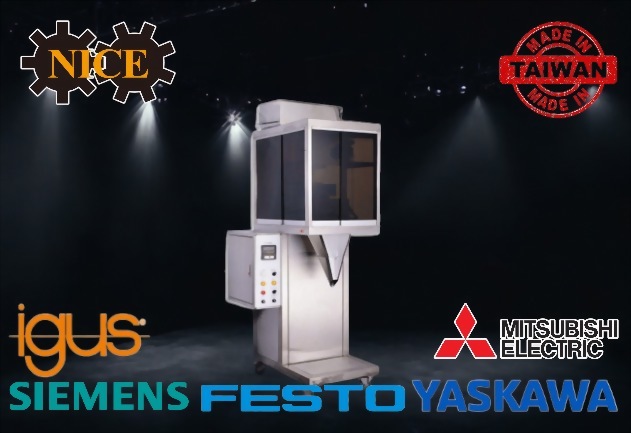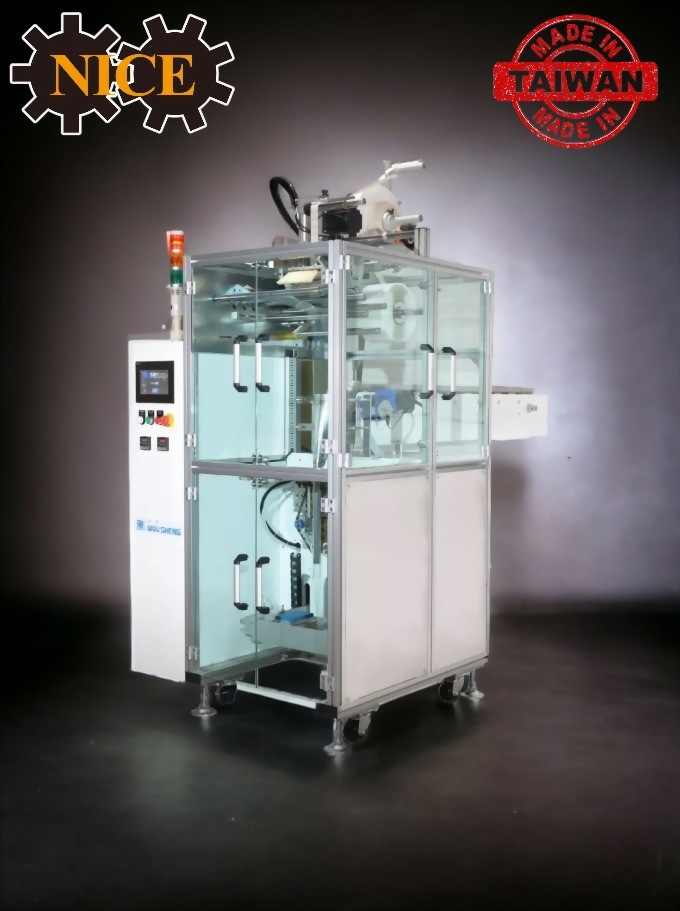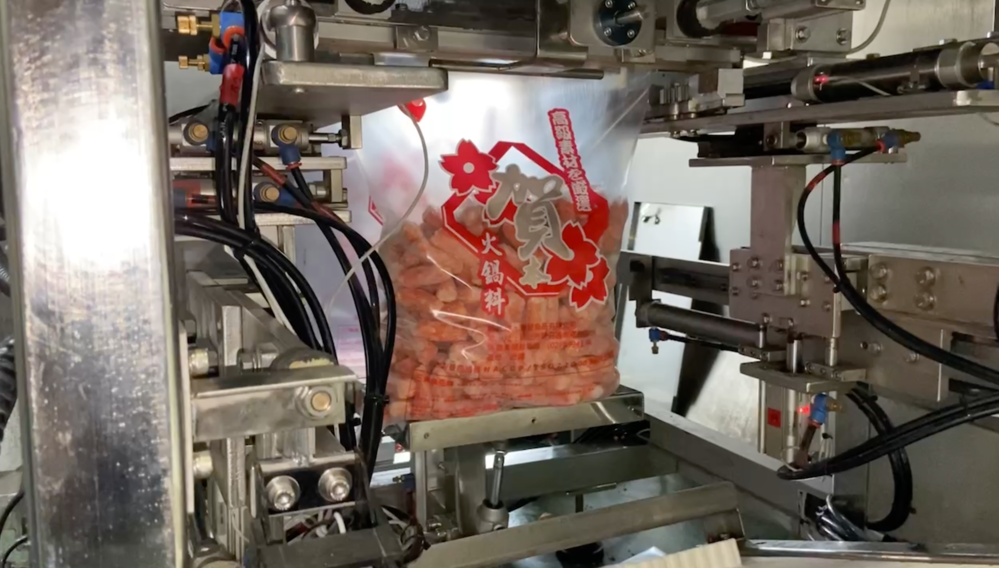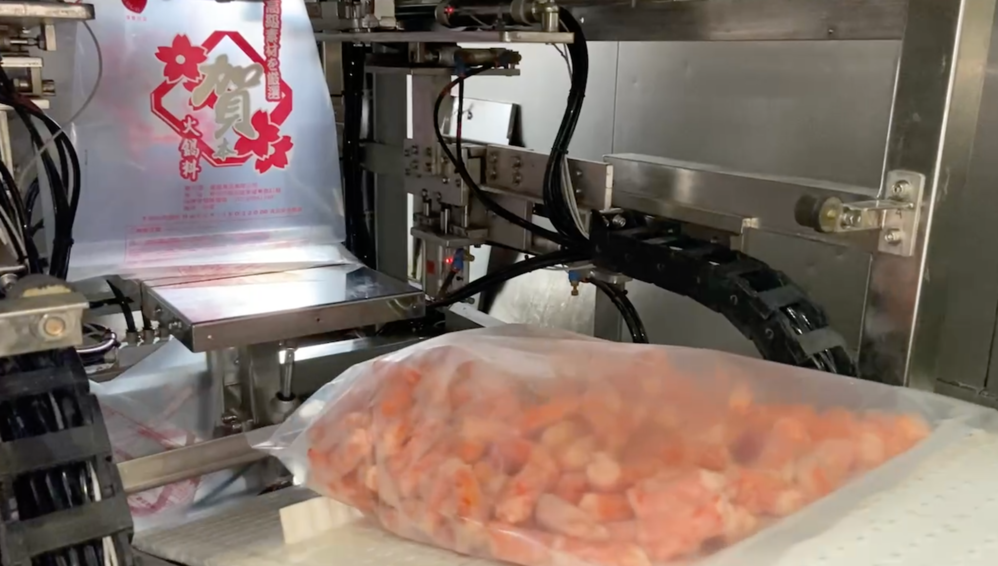VFFS packing machine
1. Vertical Forming:
- The process begins with a roll of packaging film material. The film is usually a flat roll that is pulled into the machine.
2. Film Unwinding:
- The packaging film is unwound and guided through the machine. It passes through various rollers and guides to ensure proper alignment and tension.
3. Vertical Sealing:
- The film is formed into a vertical tube by a set of forming collars. Vertical sealing jaws then create a continuous vertical seal to form the back of the bag.
4. Product Filling:
- The product is dispensed into the bag through a filling tube. The filling mechanism can be a volumetric filler, auger filler, or another type depending on the nature of the product.
5. Horizontal Sealing:
- Once the product is filled, horizontal sealing jaws create a horizontal seal at the top of the bag, effectively sealing the product inside.
6. Cutting:
- The machine then cuts the sealed film, creating individual packages. The cutting mechanism can be a rotary knife, reciprocating knife, or another cutting device.
7. Final Product Discharge:
- The finished, sealed packages are then discharged from the machine, ready for further processing or packaging.
8. Controls and HMI:
- VFFS machines are equipped with a control system, often featuring a Human Machine Interface (HMI). The HMI allows operators to set parameters such as bag length, fill volume, and machine speed.
- Construction Material:
- stainless steel, aluminum for durability and hygiene.
- Film Roll Specifications:
- Flexibility
- Sealing System:
- heat sealing, ultrasonic sealing
- Filling System:
- volumetric, auger, liquid pump
- filling accuracy and speed.
- Bag Length and Width:
- Flexibility
- Film Registration:
- Film registration system for accurate positioning of printed film.
- Speed:
- Maximum production speed in bags per minute 160mpm.
- Control System:
- Type of control system (e.g., PLC - Programmable Logic Controller).
- Human Machine Interface (HMI) for user interaction.
- Control of various parameters such as temperature, speed, and bag length.
- Optional Features:
- Gas flushing system for modified atmosphere packaging (MAP).
- Date coding or printing capabilities.
- Automatic film splicing for continuous operation.
- Infeed and outfeed conveyors.
- Bag support and discharge systems.
- Power Requirements:
- Voltage, phase, and frequency requirements.
- Compliance and Certification:
- Adherence to industry standards and certifications (e.g., CE certification).
- Safety Features:
- Emergency stop buttons, safety interlocks, and other safety features.
- Maintenance Requirements:
- Maintenance schedule and requirements for the machine.
- Documentation:
- User manual, electrical and mechanical drawings, spare parts list.
Key Features:
- Speed and Efficiency: VFFS machines are known for their high production speeds and efficiency in creating uniform packages.
- Versatility: These machines can handle a wide range of products, including powders, liquids, granules, and solids.
- Packaging Materials: VFFS machines can work with various packaging materials, including polyethylene, polypropylene, laminates, and other films.
- Optional Accessories: Some VFFS machines may include additional features such as gas flushing for modified atmosphere packaging, date coding, and automatic film splicing for continuous operation.
- Food Industry:
- Snack Foods: Packaging of chips, pretzels, popcorn, and other snack products.
- Bakery Products: Wrapping of cookies, biscuits, and other baked goods.
- Confectionery: Packaging of candies, chocolates, and other confectionery items.
- Cereal and Grains: Bagging of cereals, grains, and similar products.
- Beverage Industry:
- Powdered Drinks: Packaging of instant coffee, tea, and other powdered beverage mixes.
- Liquid Products: Bagging of liquids such as sauces, syrups, and juices.
- Pharmaceutical Industry:
- Tablets and Capsules: Packaging of pharmaceutical tablets and capsules.
- Powdered Medications: Bagging of pharmaceutical powders.
- Personal Care and Household Products:
- Detergents and Powders: Packaging of laundry detergents and cleaning powders.
- Personal Care Products: Bagging of items like soaps, shampoos, and toiletries.
- Agricultural Industry:
- Seeds and Fertilizers: Bagging of seeds, fertilizers, and other agricultural products.
- Hardware and Components:
- Nuts and Bolts: Packaging of hardware components like nuts, bolts, and screws.
- Fasteners: Bagging of various types of fasteners and small hardware items.
- Medical Products:
- Disposable Items: Packaging of disposable medical items, such as gloves or gauze.
- Diagnostic Kits: Bagging of medical diagnostic kits.
- Frozen Food Industry:
- Frozen Vegetables: Packaging of frozen vegetables and fruits.
- Frozen Snacks: Bagging of frozen snacks and appetizers.
- Pet Food Industry:
- Dry Pet Food: Packaging of kibble and dry pet food products.
- Non-Food Products:
- Powdered Chemicals: Bagging of various powdered chemicals.
- Building Materials: Packaging of items like cement and grout.


